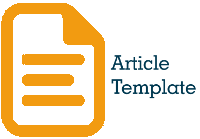IOT IMPLEMENTATION TEMPERATURE AND AMMONIA GAS MONITORING WITH WEBSITE-BASED CHICKEN CAGES USING THE LARAVEL FRAMEWORK
Abstract
To increase eggs production, the management of laying hens must be considered, one of the method is to apply the temperature and ammonia gas levels, with suitable for critria for laying hens. it is necessary to monitor the temperature and ammonia gas in the laying hen cage, this method can fulfilled by implementing monitoring with the Internet of Things (IOT) using Arduino and monitoring it with a website based on the Laravel framework and storing sensor results in the database, to send sensor results to website can uses ESP8266 with the HTTP protocol. The tests in this study were divided into three parts with connectivity, functionality, and blackbox tests. The connectivity test ESP8266 resulted is able to connect to the website with HTTP Proctocol. Sensor functionality test shows that the sensor can detect temperature and ammonia gas levels in the cage. The blackbox test shows that the website can store and display sensor readings
Downloads
References
[2] A. Dzuhri, J. R. Manullang and A. Wibowo, "Produktivitas ayam petelur fase layer dengan tingkat kepadatan kandang baterai dan umur yang berbeda," Jurnal Peternakan Lingkungan Tropis, pp. 45-52, 2022.
[3] H. SUPRIYONO, F. SURYAWAN, R. M. A. BASTOMI and U. BIMANTORO, "Sistem Monitoring Suhu dan Gas Amonia untuk Kandang Ayam Skala Kecil," ELKOMIKA: Jurnal Teknik Energi Elektrik, Teknik Telekomunikasi, & Teknik Elektronika, vol. 9, no. 3, p. 562 – 576, 2021.
[4] A. K. Nalendra, M. Mujiono and A. Widigdyo, "PIM Sistem Kontrol Suhu dan Gas Amonia pada Kandang Ayam berbasis Internet of Thingsdi Mitra CV. Bintang Timur Farm," Jurnal ABDINUS : Jurnal Pengabdian Nusantara, vol. 6, no. 3, pp. 850-858, 2022.
[5] C. Y. Oraplean, J. D. Irawan and D. Rudhistia, "IMPLEMENTASI LOGIKA FUZZY PADA SISTEM MONITORING SUHU TERNAK AYAM PETELUR BERBASIS WEB," ATI(Jurnal Mahasiswa Teknik Informatika), vol. 5, no. 2, pp. 700-707, 2021.
[6] S. Fuadi and O. Candra, "Prototype Alat Penyiram Tanaman Otomatisdengan Sensor Kelembaban dan Suhu Berbasis Arduino," JTEIN: Jurnal Teknik Elektro Indonesia, vol. 1, no. 1, 2020.
[7] M. N. Arifin, M. H. H. Ichsan and S. R. Akbar, "Monitoring Kadar Gas Berbahaya Pada Kandang Ayam Dengan Menggunakan Protokol HTTP Dan ESP8266," Jurnal Pengembangan Teknologi Informasi dan Ilmu Komputer, vol. 2, no. 11, pp. 4600-4606, 2018.
[8] M. Iqbal, I. Rusi and F. Febriyanto, "SISTEM INFORMASI INVENTARIS BARANG BERBASIS WEB MENGGUNAKAN LARAVEL PADA DINAS KEPENDUDUKAN DAN PENCATATAN SIPIL SINTANG," ANTIVIRUS: Jurnal Ilmiah Teknik Informatika, vol. 13, no. 2, pp. 105-119, 2019.
[9] Medion, "Strategi Mengendalikan Amonia di Kandang," Medion, 01 Mei 2022. [Online]. Available: https://www.medion.co.id/strategi-mengendalikan-amonia-di-kandang/. [Accessed 30 April 2023].
[10] Medion, "Mengendalikan Amonia, Si Biang Masalah Pernapasan," Medion, 1 Mei 2020. [Online]. Available: https://www.medion.co.id/mengendalikan-amonia-si-biang-masalah-pernapasan/. [Accessed 1 Mei 2023].
[11] M. Mujiono, A. K. Nalendra and E. H. Candrapuspa, "Penerapan Logika Fuzzy Pada Alat Pendeteksi Kualitas TelurBerbasis MikrokontrolerArduino," Generation Journal, vol. 7, no. 1, pp. 8-13, 2023.
[12] P. S. Indonesia, "Cahaya, Suhu dan Kelembapan Kandang Ayam Petelur," Poultry Shop Indonesia, 2016. [Online]. Available: https://www.poultryshop.id/2016/10/cahaya-suhu-dan-kelembapan-kandang-ayam.html. [Accessed Mei 30 2023].
Copyright (c) 2023 Antivirus : Jurnal Ilmiah Teknik Informatika

This work is licensed under a Creative Commons Attribution-ShareAlike 4.0 International License.
Authors who publish with this journal agree to the following terms:
- Copyright on any article is retained by the author(s).
- Author grant the journal, right of first publication with the work simultaneously licensed under a Creative Commons Attribution License that allows others to share the work with an acknowledgement of the work’s authorship and initial publication in this journal.
- Authors are able to enter into separate, additional contractual arrangements for the non-exclusive distribution of the journal’s published version of the work (e.g., post it to an institutional repository or publish it in a book), with an acknowledgement of its initial publication in this journal.
- Authors are permitted and encouraged to post their work online (e.g., in institutional repositories or on their website) prior to and during the submission process, as it can lead to productive exchanges, as well as earlier and greater citation of published work.
- The article and any associated published material is distributed under the Creative Commons Attribution-ShareAlike 4.0 International License








